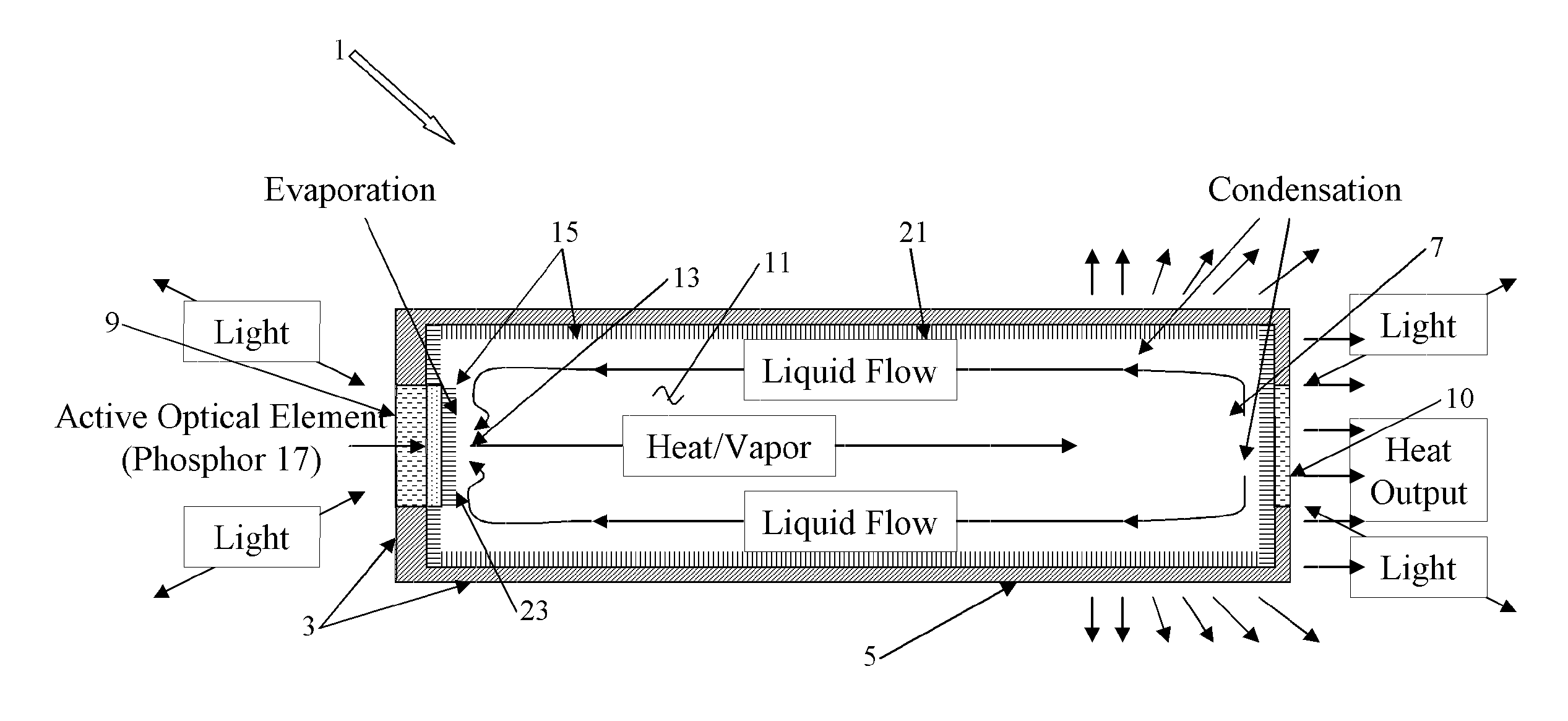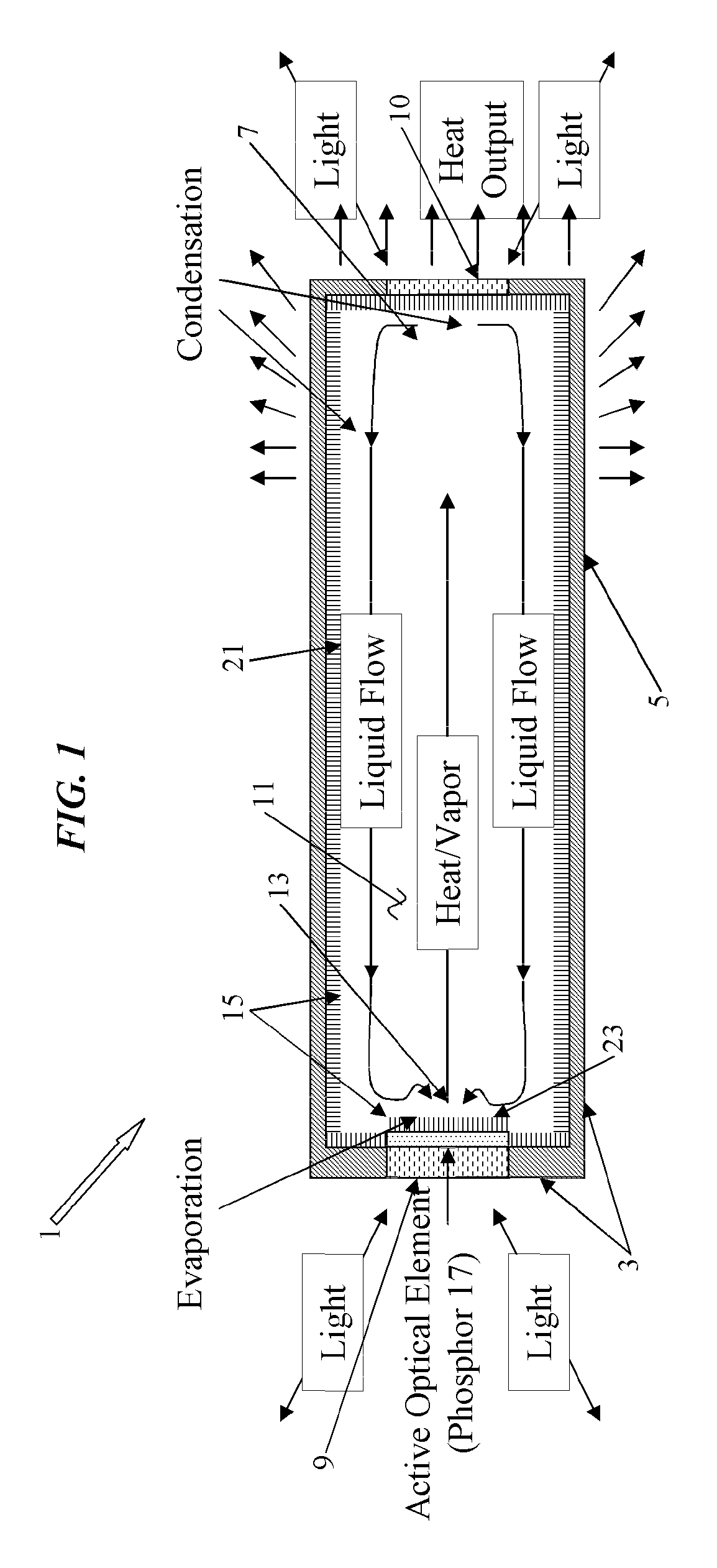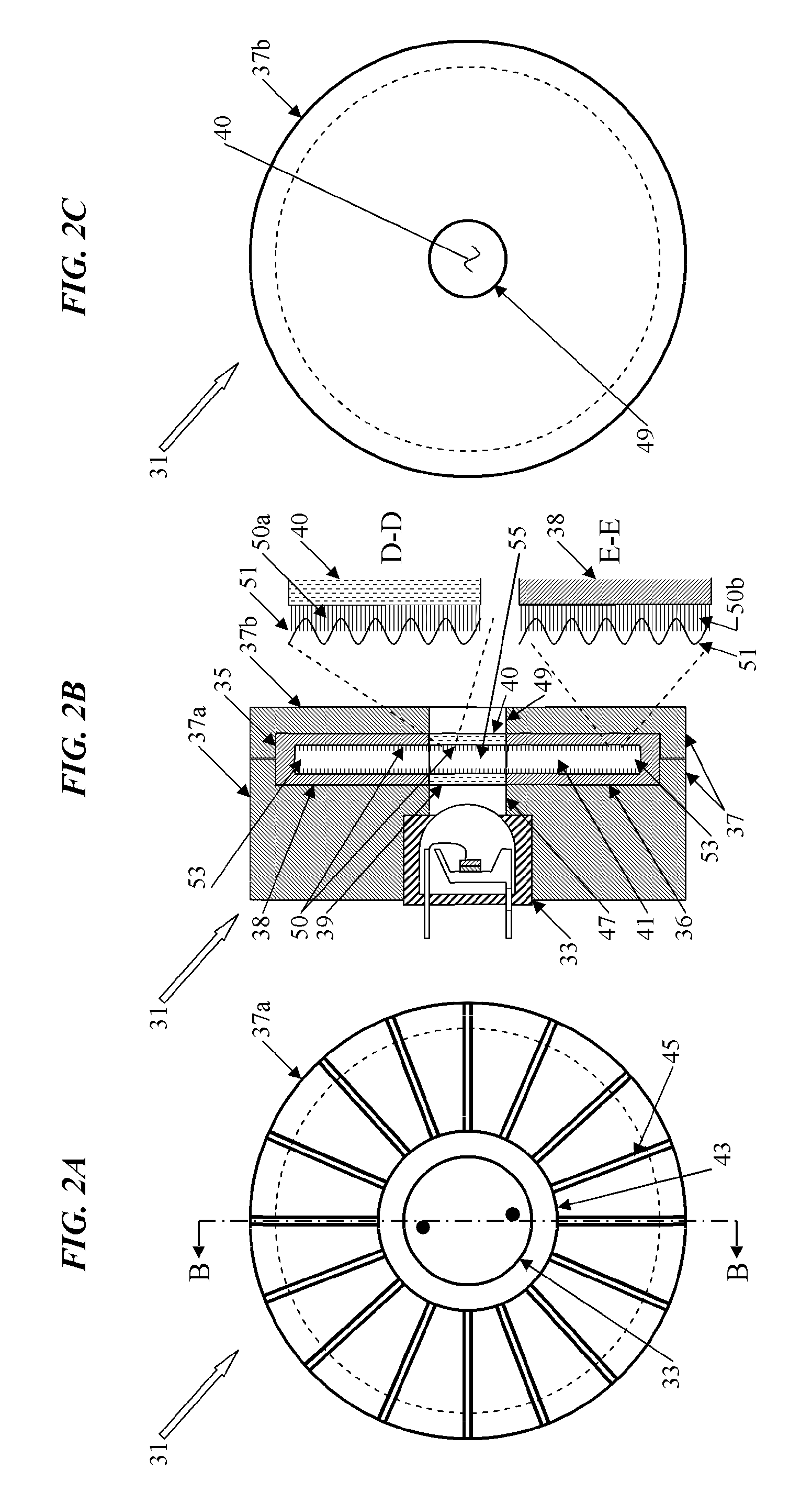Phosphor incorporated in a thermal conductivity and phase transition heat transfer mechanism
a heat transfer mechanism and thermal conductivity technology, applied in indirect heat exchangers, semiconductor devices of light sources, lighting and heating apparatus, etc., can solve the problems of phosphors degrading rapidly, phosphors to heat, and phosphors that produce desirable output light characteristics degrade quickly, so as to improve the thermal mitigation effect of phosphors
- Summary
- Abstract
- Description
- Claims
- Application Information
AI Technical Summary
Benefits of technology
Problems solved by technology
Method used
Image
Examples
Embodiment Construction
[0044]In the following detailed description, numerous specific details are set forth by way of examples in order to provide a thorough understanding of the relevant teachings. However, it should be apparent to those skilled in the art that the present teachings may be practiced without such details. In other instances, well known methods, procedures, components, and / or circuitry have been described at a relatively high-level, without detail, in order to avoid unnecessarily obscuring aspects of the present teachings.
[0045]The various technologies disclosed herein relate to apparatuses, devices or systems for emitting light which utilize a phosphor, where the phosphor is included in the chamber of a cooling element such as a thermal conductivity and phase transition heat transfer mechanism. A variety of examples of such arrangements as well as techniques for making and operating such mechanisms, etc., that so include the phosphor, are discussed below.
[0046]For example, a thermal condu...
PUM
 Login to View More
Login to View More Abstract
Description
Claims
Application Information
 Login to View More
Login to View More - R&D
- Intellectual Property
- Life Sciences
- Materials
- Tech Scout
- Unparalleled Data Quality
- Higher Quality Content
- 60% Fewer Hallucinations
Browse by: Latest US Patents, China's latest patents, Technical Efficacy Thesaurus, Application Domain, Technology Topic, Popular Technical Reports.
© 2025 PatSnap. All rights reserved.Legal|Privacy policy|Modern Slavery Act Transparency Statement|Sitemap|About US| Contact US: help@patsnap.com



